Wilderness Awareness School and Islandwood: Graduate Exchange Weekend
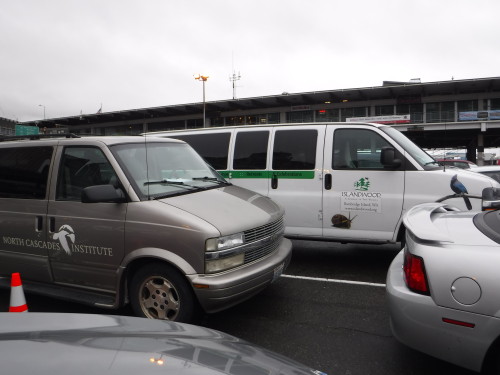
The North Cascades Institute has a Graduate Residency program where Western Washington University students live and learn at the Environmental Learning Center located near Diablo, Washington for a full year. Currently the Institute’s 15th cohort (C15) is doing their residency as part of their Master’s in Outdoor Environmental Education.
This idea of a dedicated year of learning for future Environmental Educators is not unique to North Cascades Institute. Back in January my cohort and I hosted three other residential higher education programs at the Environmental Learning Center. We spent the weekend sharing about what we did with Mountain School and our residency in the mountains of the North Cascades. This month it was our turn to go down valley and visit the similar programs of
- Wilderness Awareness School’s Anake Leadership Program
- Islandwood’s Education for Environment and Community Graduate Program
- Islandwood’s Urban Environmental Education M.A.Ed. in partnership with Antioch University, Seattle
Wilderness Awareness School (WAS):
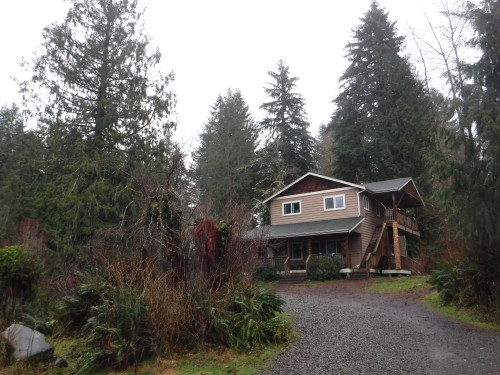
WAS’s Cedar Lodge.
Founded in 1983, the Wilderness Awareness School (located in Duvall, Washington) the goal of the organization is to “to provide opportunities for children to discover the natural world around them, and for adults to explore, gain confidence in, and reconnect with the environment.” They do this through a variety of programs that involve over 2000 students every year. Their Anake Leadership Program is designed to build on what students have learned over their time at school and develop them as leaders in Outdoor Education.
When we arrived at the school I was amazed by the fact at how isolated the place felt. We had driven through countless suburbs to get there but once on the property I felt as much in the wilderness as I do at the Environmental Learning Center. After getting our tents set up (since the only heated building was reserved for elders and eating) we were led to the founding circle. When the property was still undeveloped one of their founders and elders Ingwe placed his staff down the ground and proclaimed “this is where students will come and learn.” That spot is where their sacred fire is located and is the location of many special occasions.
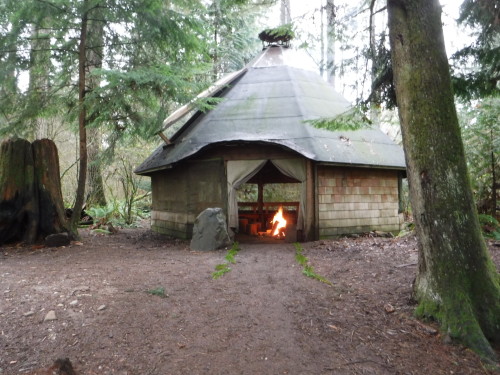
Sacred fire.
We were led quietly to the fire with music coming from inside the hut. As we quickly sat down one of the students started the primitive practice of lighting the fire. We learned later that the fire had always been lit by primitive means. The whole process took several minutes but after every Anake Leadership Student participated in the process the fire we lit!
Our weekend started officially by every person sharing their name, program they are in, something they are thankful for and finding their new name. This last process had us pulling a piece of paper out of a raven puppet. Each was a scientific name of one of our natural neighbors. I was given the game Uria aalge, which turns out to be the common murre.
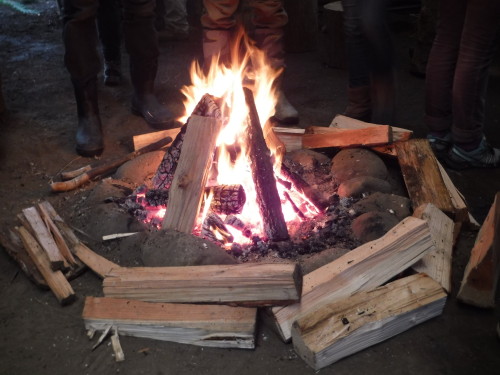
Opening fire.
After a long round of thanks and laughter, we were then divided into four trail groups. WAS wanted to give us an experience similar to their students with the expectation we would give input as educators afterwards.
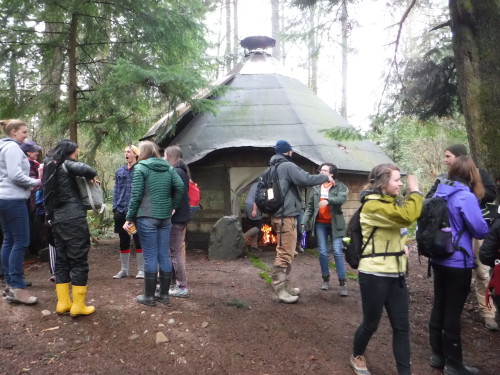
Dividing into trail groups.
As soon as Markus, an Anake Leadership student and our trial leader for the day, made sure everyone was there he sprinted off without a word into the wilderness. Our group sped to keep up, darting under branches and over small streams.
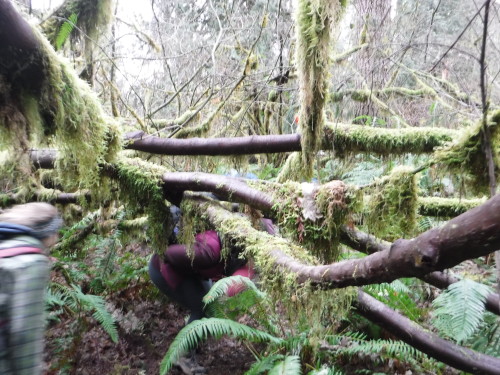
Markus leading us quickly down the trail.
After ten minutes of trail running Markus stopped and whispered to us “what do you see?” I personally had been so focused on running that I forgot to notice what was all round me. He then instructed is on a few quiet activities designed for us to fully notice what was around us.
After two hours of getting personally connected to the landscape we gathered as a whole group to learn a more active way to get to know one another and the landscape. The “Squirrel game” had us running around quietly with blindfolds trying to get each other out with nuts (actually bandannas in a knot). The point was to have us heighten our senses other than sight.
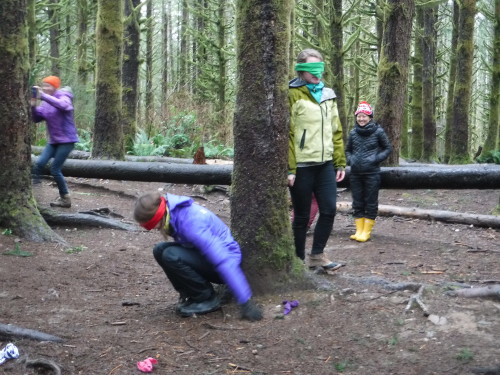
Our Emily Baronich (left in purple) and Kailyn Swarthout (EEC student) trying to hide from each other.
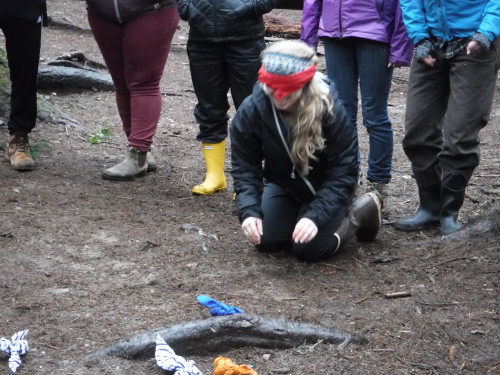
Emily Ford (C15) embodying being a squirrel.
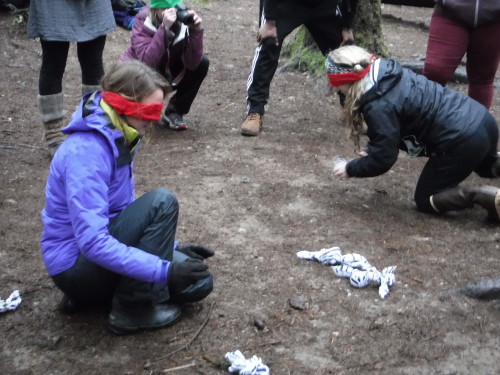
Down to the last two!
To get an even fuller experience you can watch us Playing the Squirrel Game.
After other fun games we then were invited to explore the land at our own pace. I personally took some time to see their pond. This tranquil spot on site is a fantastic place for sit spots and journeling.
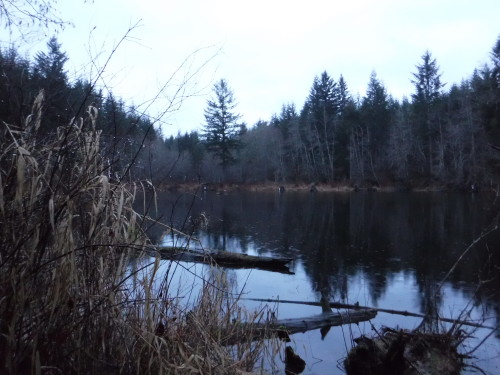
Pond where many sit spots look out over.
After a great first day we came back to Cedar lodge and discussed the philosophy and practices of the school. This was a chance for us to share our own experiences and start to incorporate each other’s philosophies into our own.
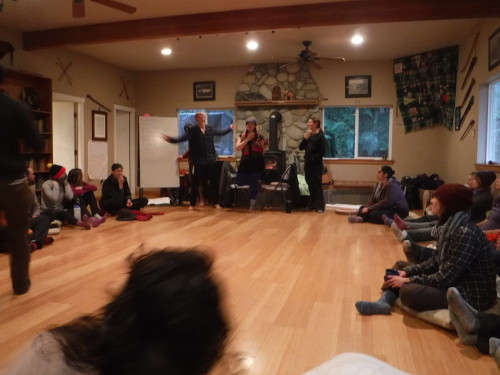
Discussing how our first day went.
The next day had us reflecting on not only the philosophy of some of the activities but of the whole school. Adapted from the traditional Medicine Wheel, WAS’s take involves many different layers into once circle. We only had enough time to cover how the natural seasons, life cycle of a plant, life cycle of a person and the learning experience of a student over three days are connected.
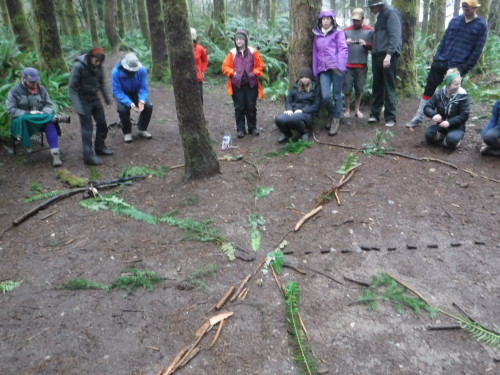
WAS’s medicine wheel closing.
All four programs then set out to catch a ferry. Our next location had us traveling across the high seas to Bainbridge Island.
Islandwood’s Educaiton for Environment and Community (EEC) Located on Bainbridge Island
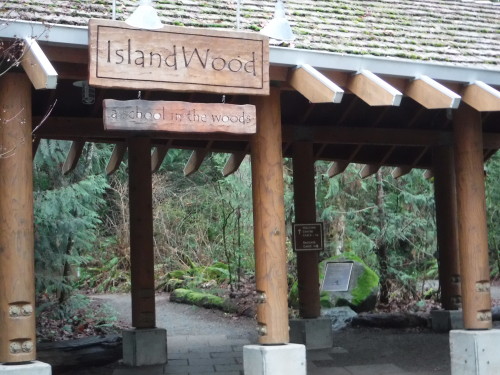
Entrance to the School in the Woods.
Islandwood is an educational non-profit located on 255-acres on Bainbridge Island. Started in 1999 by Debbi Brainerd the organization for over a decade has brought students and families to the island to get a deeper connection with the outdoors. While the paved paths and multiple buildings gave us a completely different experience than WAS, we could still see how both gave students a deeper experience to the great outdoors.
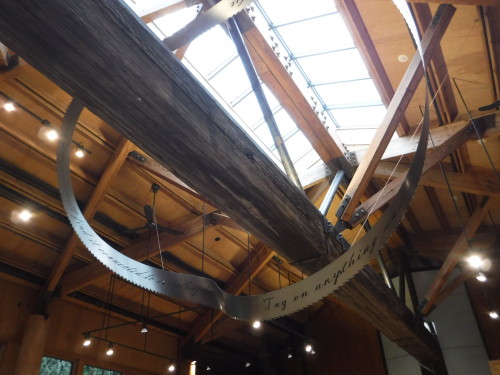
“Tug on anything hard enough and you will feel that it is connected to everything.” Enscripted on a Möbius strip saw that was historically used to clear cut trees on the island.
In each building on campus there were multiple stories being told through symbols and objects. The picture located above shows and art piece of a saw used historically to clear cut trees in the area. The post in the middle comes from one of those trees. It shows how much history is located even on 255 acres of land.
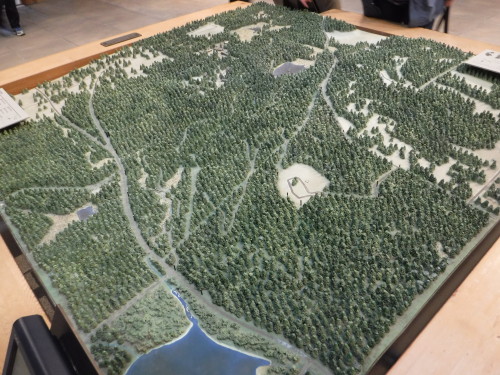
Model of total property of Islandwood.
After being welcomed in we got to see just a bit of campus. Each was designed to not only ensure maximum energy efficiency but to also be learning tools. Each room that students stay in, for example, is named after a specific species. Also in each room is a plaque describing the species their room is named after.
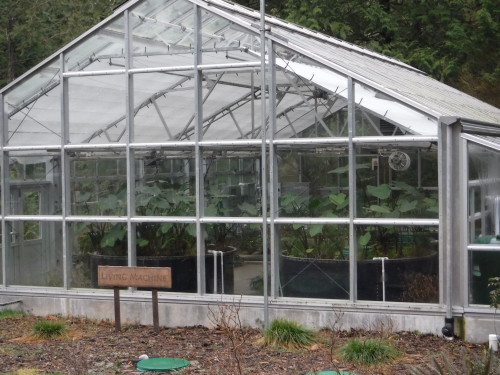
Islandwood’s “living machine” used to clean water from campus.
After our tour and an introduction to campus we were divided into trail groups to get more acquainted with the land. What caught my eye was the 200 foot canopy tower, designed to give students a birds eye view of the whole property.
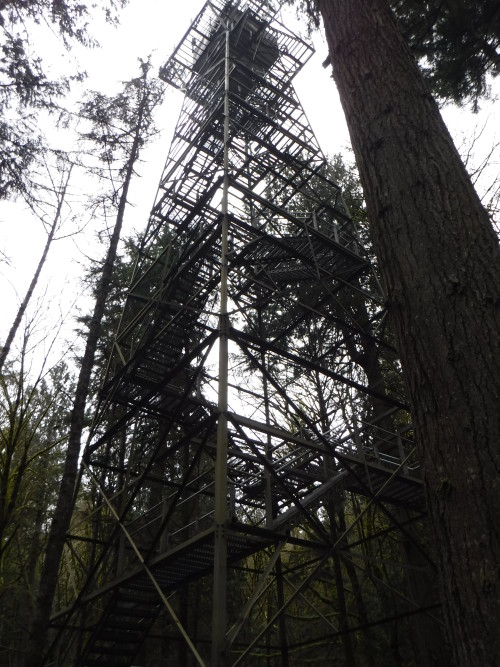
200 foot canopy tower.
I have lived in forests my whole life but had never seen it quite this way. It gave me a new appreciation for the woods and for the experience that Islandwood gives to their students each week.
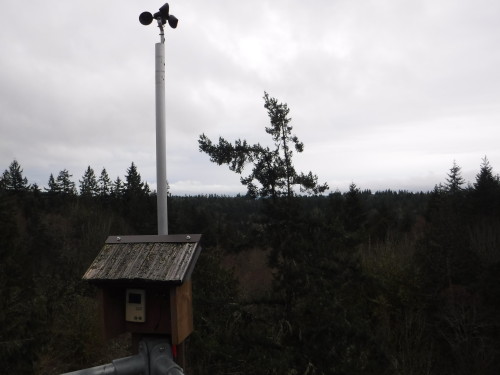
View from the tower (out).
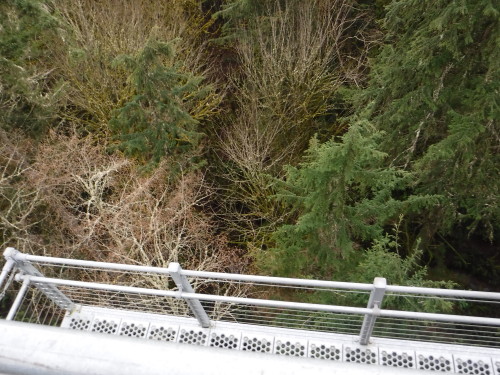
View from the tower (down).
The unfortunate thing about the exchange was that it was too short! After our tour we had only enough time for two more activities and dinner before being down for the day. Half of my cohort decided to travel into Seattle to sit in on an Urban Environmental Education class while the other half wanted to explore Islandwood’s Bainbridge site some more.
Islandwood’s Urban Environmental Education (UEE) in Seattle
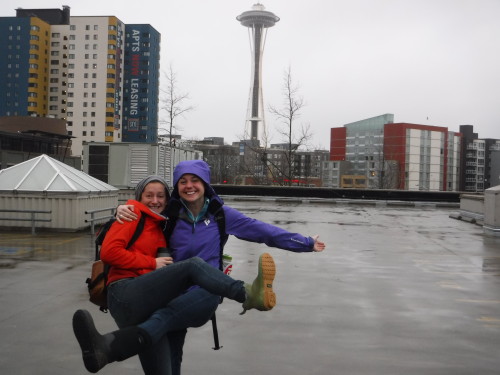
C15’s Annah Young (left) and Emily Baronich (right) excited to be in the big city.
Living in the mountains makes you forget some of the simple things that civilization brings like rooftop parking and elevators. We got quickly reacquainted to civilization with all the bustle of city life and entered Antioch University in Seattle.
Being a pilot program this year, the M.A.Ed. program offers graduates to become urban leaders in teaching about the environment. One of the core philosophies of the program is that environment is everywhere, even in cities. It is the job of Urban Environmental Educators to teach students about the environment that they live in.
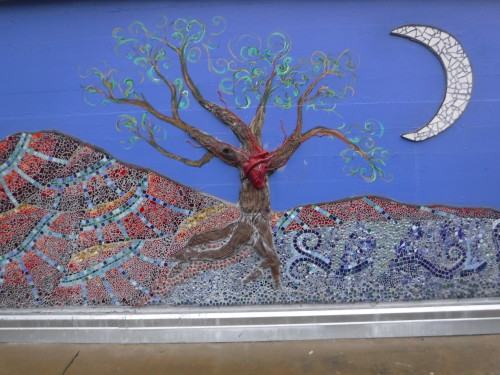
Mural located on the roof of Antioch University Seattle.
Traveling down into the depths of the university building, we got to meet all the UEE students and sit in on one of their classes. Prof. Sue Byers invited us to fully engage in the class and to give a new outlook on the problem they were tackling: barriers in our schools. While I personally love the classes that I am taking at the Institute, it was refreshing to engage with new topics and new ideas and to see how diverse all of our backgrounds are as educators.
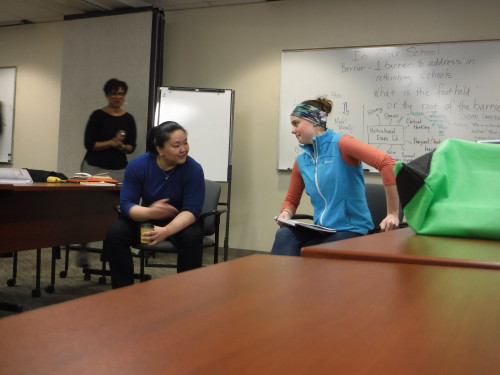
Discussion in the UEE class on “barriers in our schools” with Co-director of the program Sue Byers.
Just as the environments we teach about are complex and diverse we need our educators to be located everywhere from islands to mountains and from suburbs to cities and have diverse backgrounds and skill sets. To our peers in all Environmental Education programs, keep up the great work and we are proud to call you partners in the field of Environmental Education.

